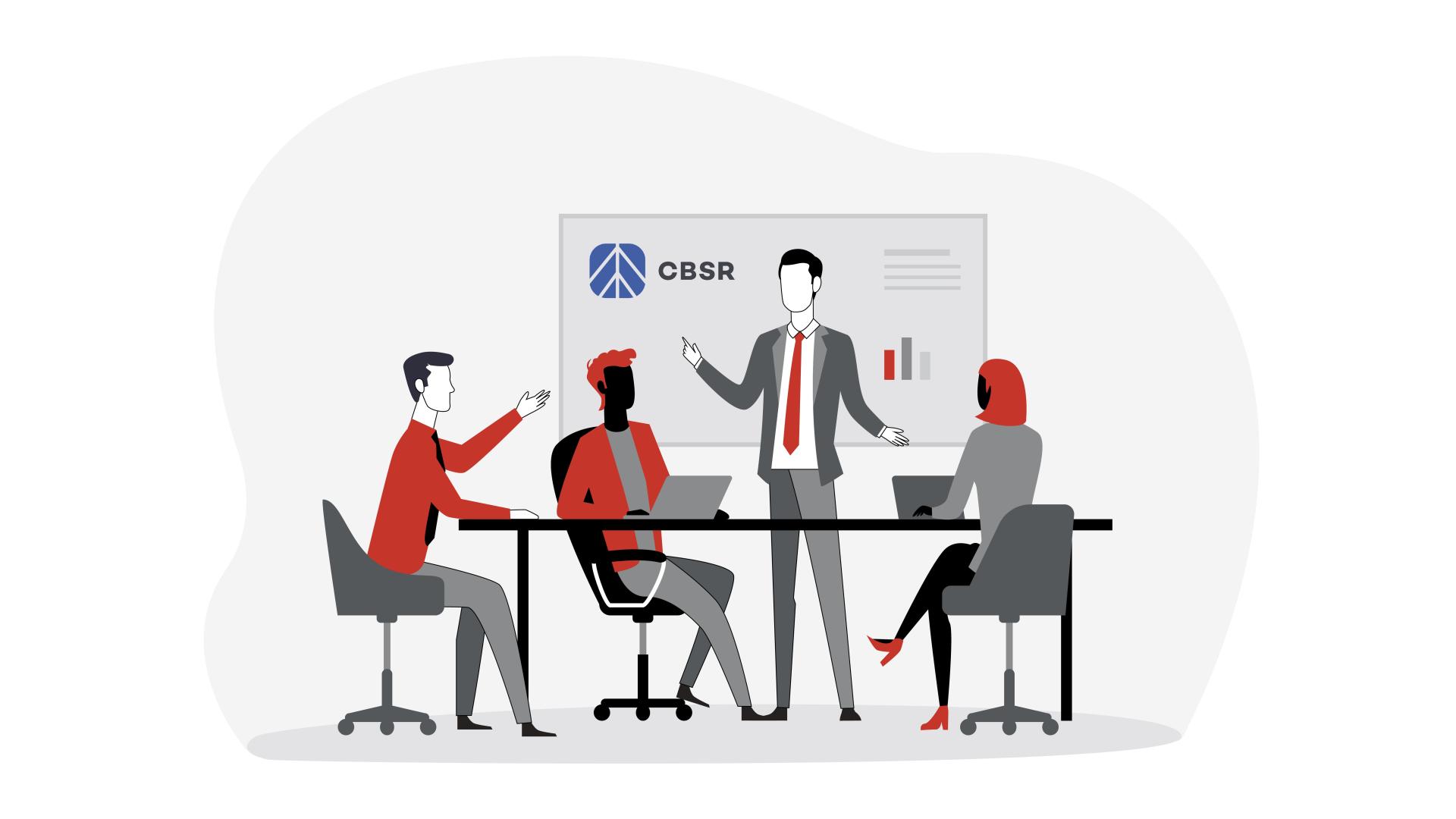Delivering Value Through Sustainable Procurement

Meet Nisha Kulangara, Ph.D., a sustainability consultant and sustainable procurement expert at Works Design. With sustainable procurement becoming increasingly crucial to businesses and consumers, Nisha shares her insights on how these practices can be implemented by organizations across their value chain.
______________
Recently, I had the privilege of completing the CBSR and HP Canada Sustainable Procurement Fellowship program. As a supply chain management professional, I found it fascinating to view procurement through a more holistic lens, gaining knowledge, insight, practical tools and resources for helping organizations advance toward a net zero future.
The 10-week workshop brought together professionals across North America to create greater awareness and ownership of the sustainable procurement space, reaffirming the business case for this work. Since procurement is generally considered a pre-competitive space, the program encouraged us to explore new ideas and discuss practical solutions for setting targets and expectations for suppliers. I strongly recommend the fellowship program to anyone wanting to deepen their knowledge in this area.
Sustainable procurement should be everybody’s business
Drawing on the insights gained from the fellowship, here are my high-level reflections on why sustainable procurement should be everybody’s business and how organizations can implement it strategically.
So, what exactly is sustainable procurement?
Sustainable procurement is “obtaining best value for money by purchasing the most sustainable goods and services from the most sustainable suppliers, in support of the buyer’s purpose, policies, and strategic sustainability goals.”(Willard, 2024).
When I studied supply chain management as a doctoral candidate, procurement meant managing the sourcing of goods and services required to support the ongoing operations of a business by focusing on metrics including cost, quality, speed, flexibility and agility. Simply stated: success came by sourcing from suppliers that delivered maximum bang for the buck. Purchasing departments worked in silos with a focus on minimizing cost and ensuring rapid delivery of goods and services.
Fortunately, the landscape is changing. This has included a global shift in how stakeholders view value chain impact – i.e., the actual and potential positive/negative impact of a company’s value chain activities on the economy, the environment and people, including human rights. Increasingly, consumers and employees are demonstrating that they care about how companies manage their supply chains and whether goods or services are procured sustainably. There are also growing regulatory pressures on companies to source responsibly (e.g., Bill S-211 in Canada and the Modern Slavery Act in the U.K.).
Organizations are now implementing sustainable procurement strategies to build stakeholder trust, enhance reputation, manage risk and ensure regulatory compliance. For example, Amazon recently announced that all its high-emitting suppliers – which account for 50% of the company’s Scope 3 emissions – must provide decarbonization plans (Segal, 2024), and LEGO Group launched a supplier sustainability program to help lower emissions by 2026 (ESG News, 2024). To help mitigate environmental and social risks, including modern slavery, some companies also have responsible procurement processes in place and apply pre-screening criteria before engaging in a business relationship with a supplier.
Six ways companies can implement sustainable procurement strategies internally and across their value chain
To implementsustainable procurement successfully within your organization and across your value chain, the following components and steps are key:
- Commitment from executive leadership to acknowledge the need to source sustainably. This commitment should cascade throughout the organization and be communicated to strategic value chain partners. This can be done through public disclosures (e.g., leadership statements), the establishing or refreshing of policies and programs (e.g., vendor code of conduct, supplier training programs) and routine internal communications.
- Level-setting and buy-in to ensure that all employees and strategic suppliers understand and support the company’s short-, medium- and long-term sustainable procurement goals, based on initial level-setting activities that establish how companies perform against peers and recognized programs (e.g., SBTi validation for Scope 3 reduction targets). Managers in various cross-functional departments (e.g., HR, Supply Chain, Sales, Accounting, Finance) should also understand the business case for sustainable procurement and communicate it, along with relevant training, to key internal employees and strategic suppliers in areas such as supplier pre-screening criteria, diversity programs, risk assessment and mitigation, and third-party supplier audit programs. The procurement team should routinely assess the participation rate and effective implementation of training efforts internally and across the value chain.
- Assurance to ensure that suppliers fully comply with applicable laws and regulations and adhere to the supplier code of conduct as mutually agreed in a contract.
- Ongoing supplier engagement to understand existing supplier capabilities and gaps. Companies can engage with suppliers (through on-site visits, check-ins, surveys, on-site and third-party audits, industry conferences, etc.) and provide resources (e.g., tools, people and investment) to help drive sustainable procurement initiatives. Often, suppliers need meaningful and ongoing engagement to help them align with a company’s priorities.
- Assessing the effectiveness of actions taken through routine data collection and audits, based on a company’s internal KPI dashboards and/or a review of third-party supplier sustainability ratings (e.g., CDP or EcoVadis). A quarterly or biannual overview of supplier performance will help companies assess their suppliers and recalibrate their internal sustainable procurement goals, targets and strategies.
- Strengthening transparency to improve credibility since a company’ssustainable procurement policies, practices, plans and performance can be communicated through a number of public disclosures, including the following:
- Company website
- Supplier code of conduct
- Stand-alone modern slavery statement (e.g., response to Bill S-211)
- Annual sustainability or annual integrated report
- Proxy or management information circular filings
- Social media channels
- Top suppliers list
To keep up with the ever-evolving regulatory landscape and with growing stakeholder expectations, it is essential that companies proactively develop and communicate their sustainable procurement action plans across their value chain and ensure organization-wide integrity by showing how plans, actions and results back their company’s commitments.
Sustainable procurement resources
These key takeaways should provide you with a general overview of sustainable procurement and its implementation. If you’re ready to take it a step further, I’ve selected a few additional resources and programs to help you tackle this important work. If you’re looking for further insights, you can always get in touch with our team at info@worksdesign.com.
- CBSR/HP Canada Sustainable Procurement Fellowship program – https://cbsr.ca/spf/
- Sustainability reporting trends and best practices – https://www.worksdesign.com/work/
- Modern slavery disclosure requirements in Canada – https://www.worksdesign.com/promoting-fair-labour-practices-with-the-new-supply-chains-act-bill-s-211/
- Sustainable Purchasing Leadership Council – https://www.sustainablepurchasing.org/
- Sustainable Procurement Pledge Canada Chapter – https://spp.earth/chapter/canada/
- EcoVadis supplier resources – https://resources.ecovadis.com/
- CDP Supplier Engagement Assessment and Rating (to identify peers who engage their suppliers) – https://www.cdp.net/en/supply-chain/supplier-engagement-assessment




